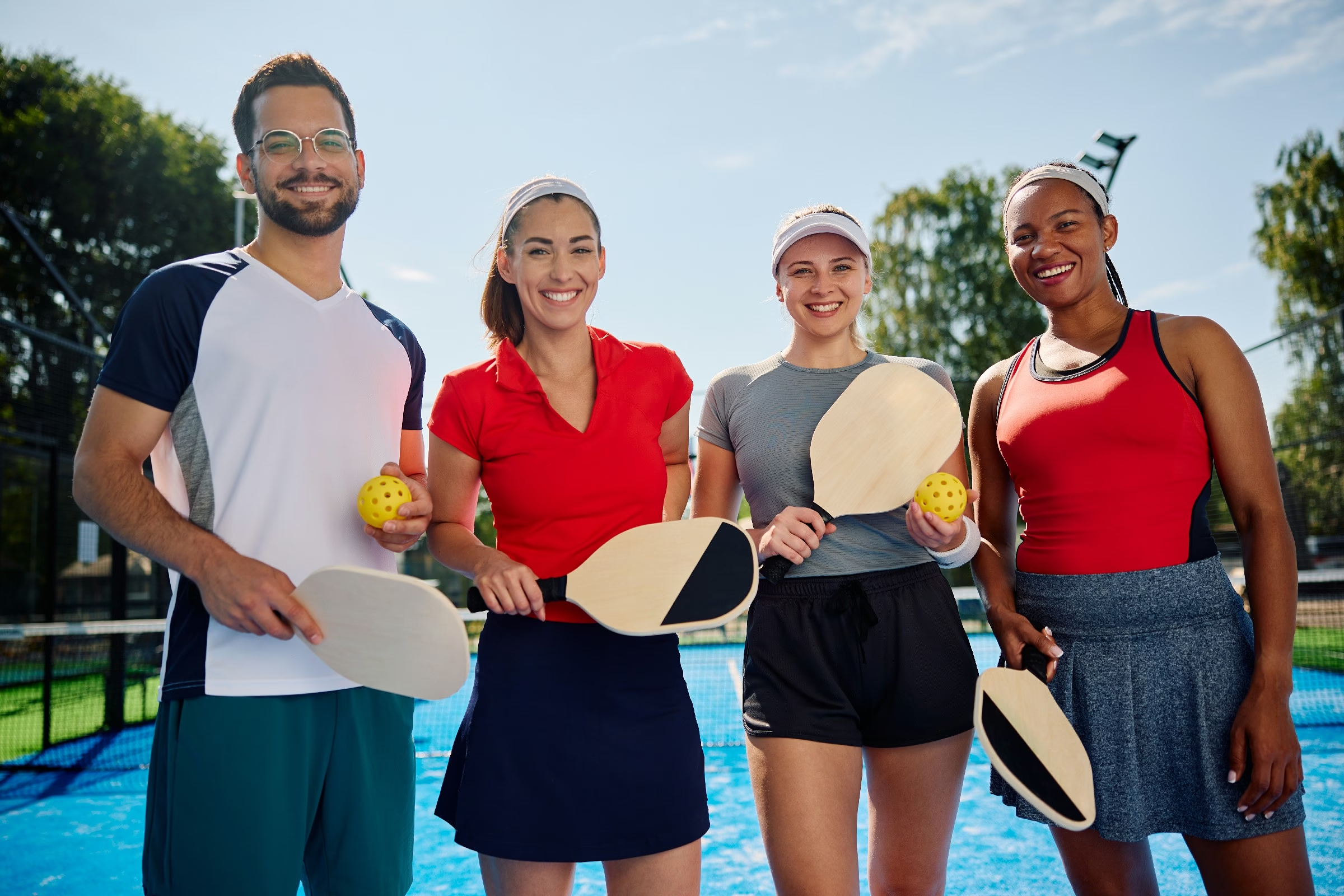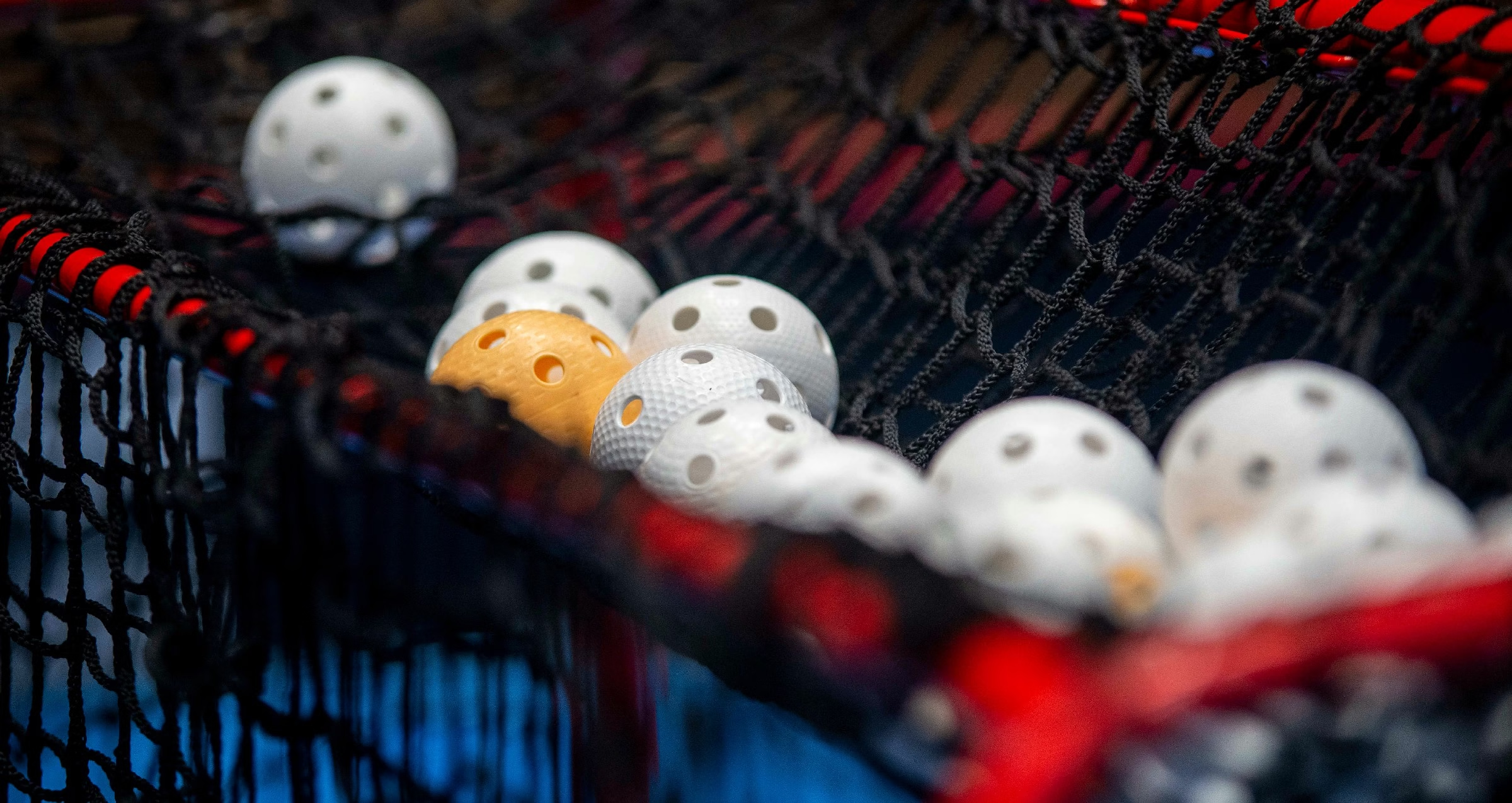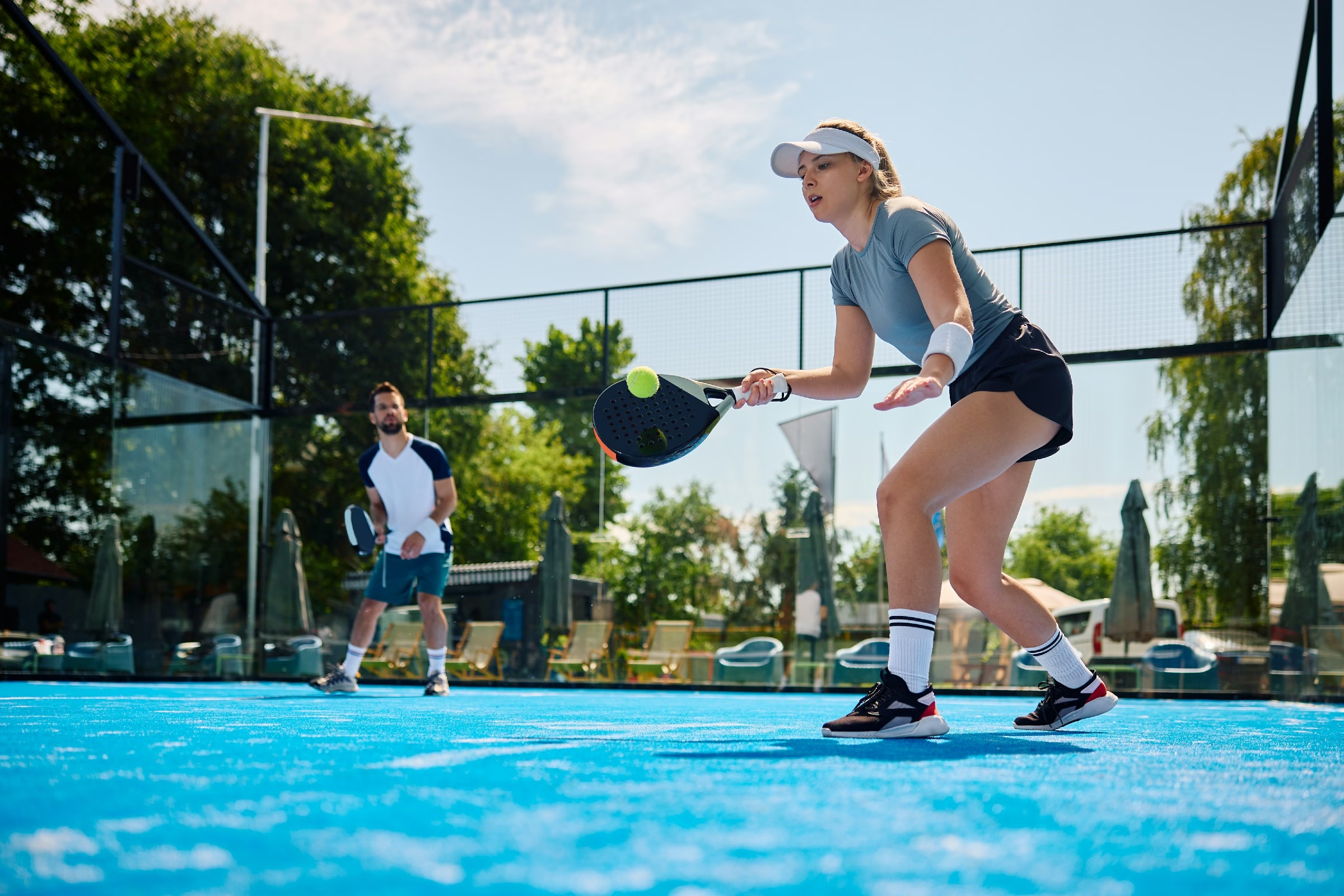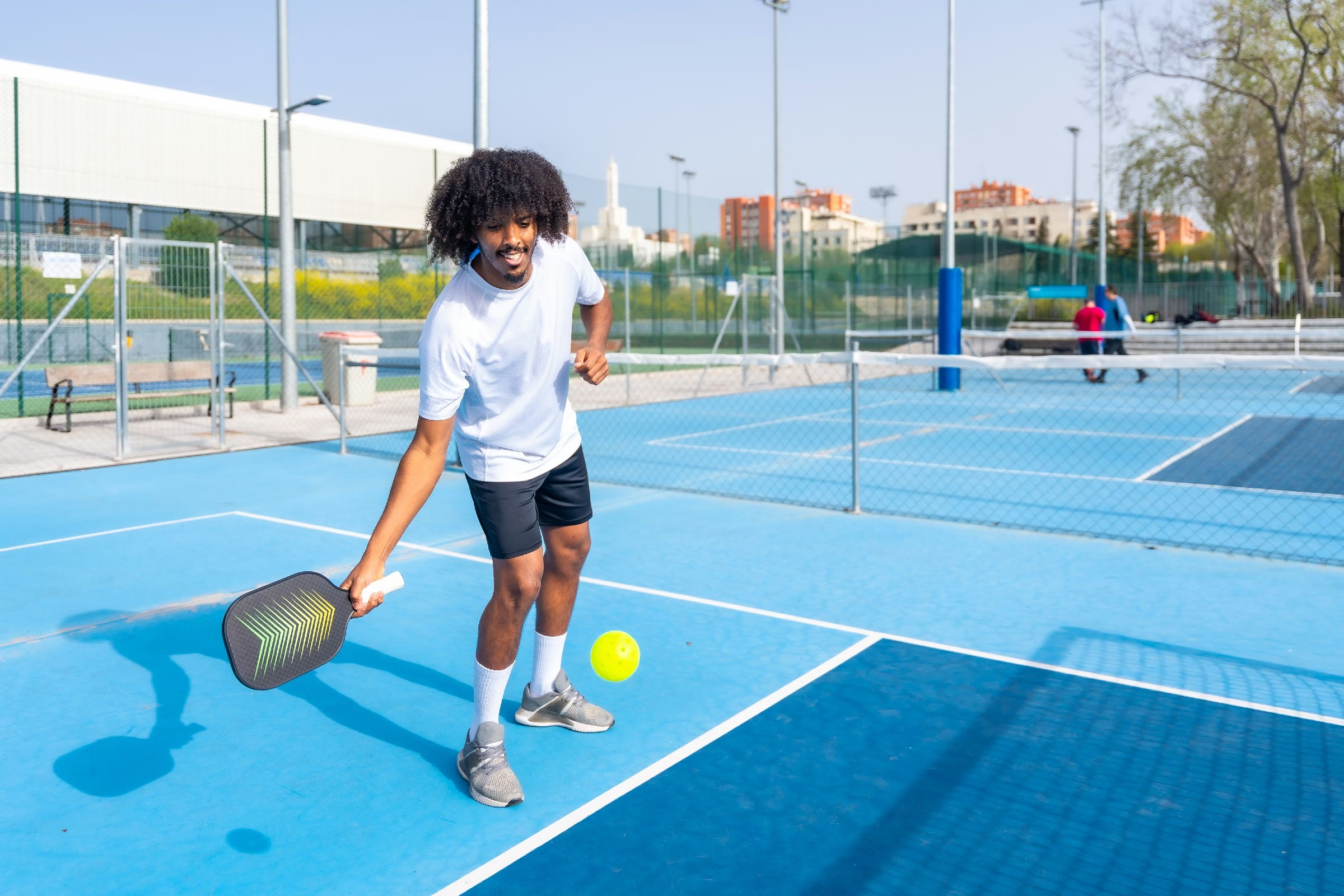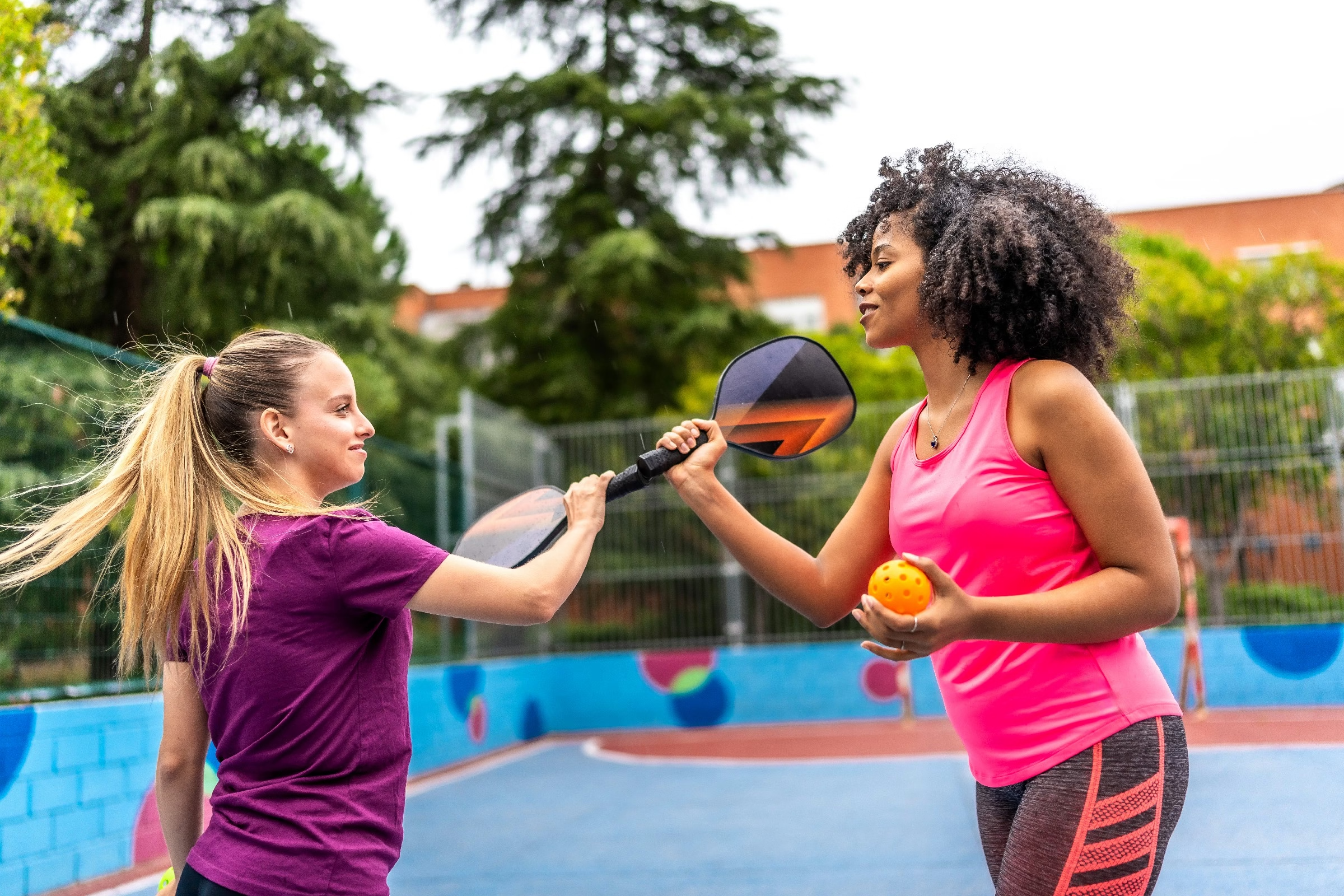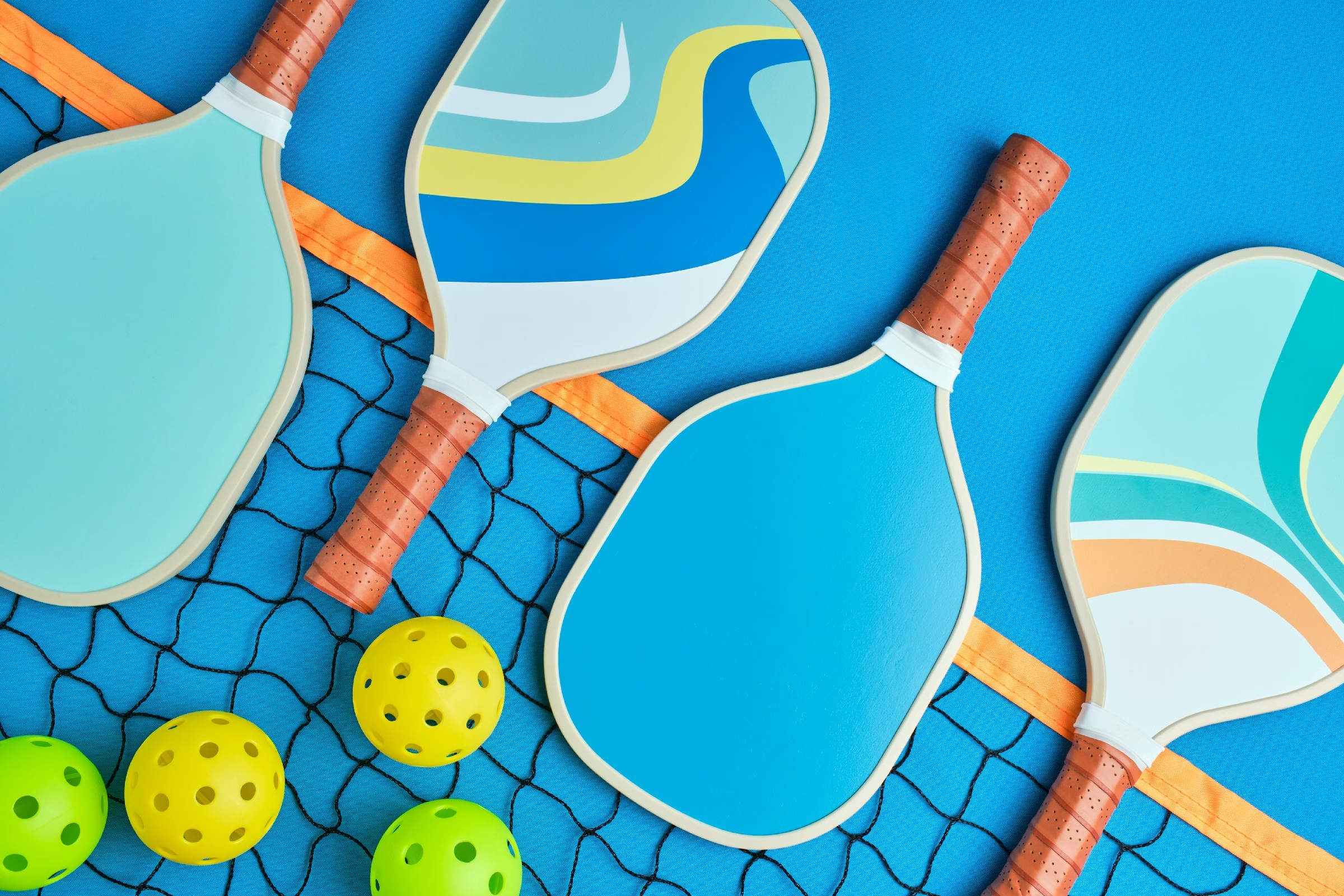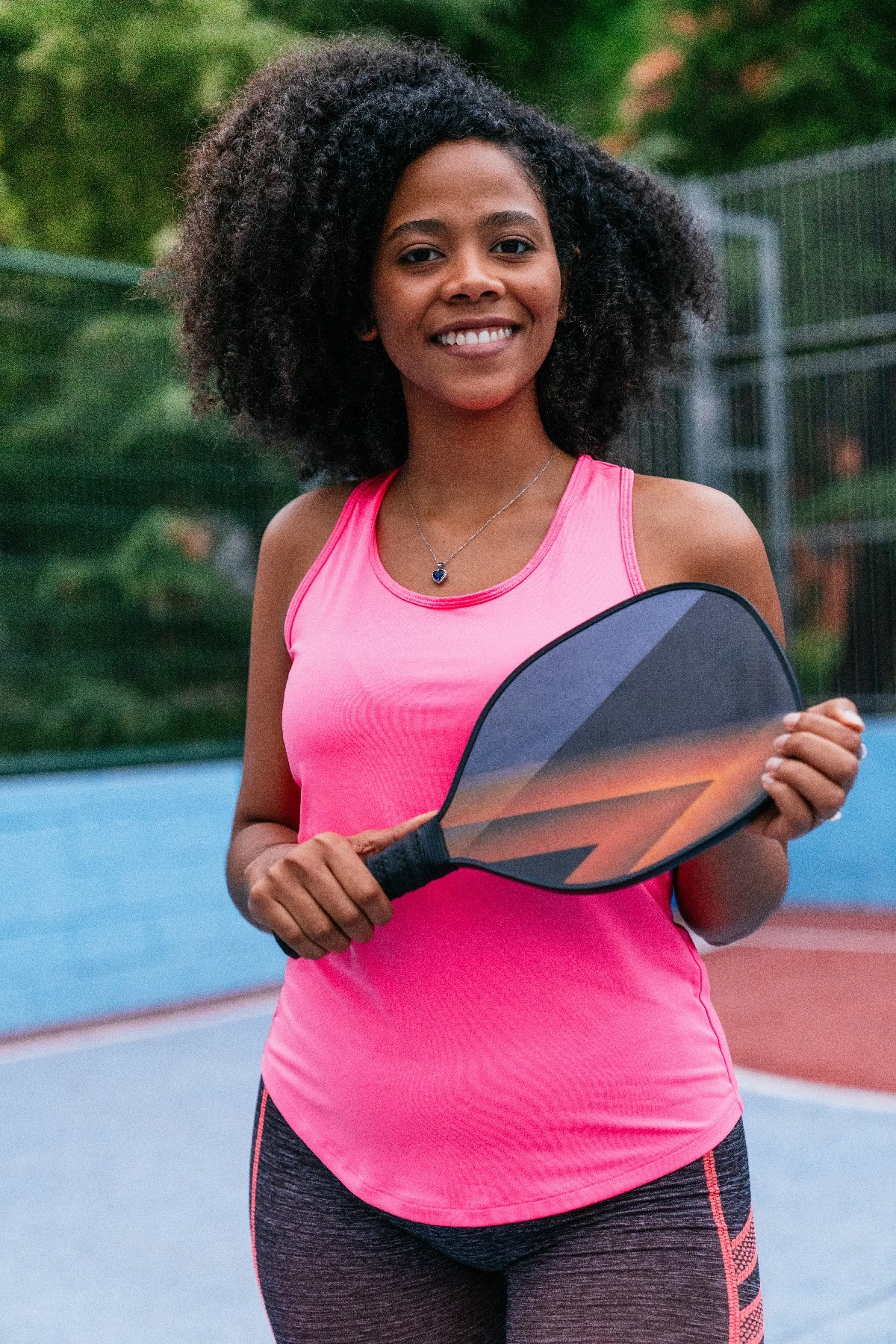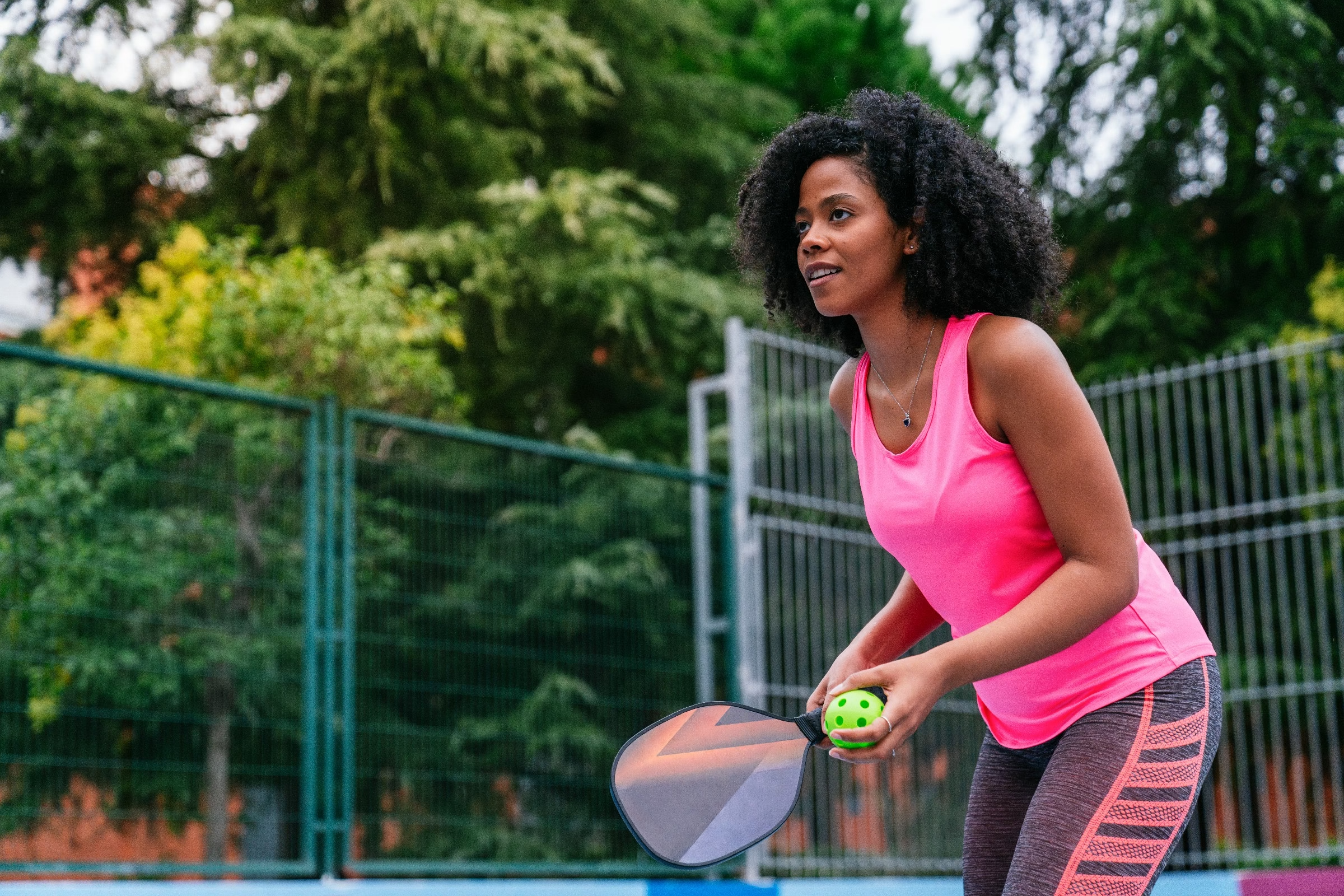Blog
when to get a new pickleball paddle

When to Get a New Pickleball Paddle: A guide to Upgrading Your Game
In the vibrant world of pickleball, where the thud of the ball and the satisfying crack of a paddle echo across courts, every player aspires to elevate their performance. Whether you’re a seasoned pro or a casual weekender, the equipment you use can significantly impact your game. Among the essentials, your pickleball paddle is your most intimate companion on the court—your partner in every serve, smash, and rally. Though, like any piece of sporting gear, paddles have a lifespan, and knowing when to replace yours can be the key to unlocking new levels of play. In this article, we’ll explore the signs that it might be time for an upgrade, helping you make informed decisions that can enhance your experience and effectiveness on the court. So, grab your racquet and let’s dive into the telltale clues that signal it’s time to invest in a new pickleball paddle.
Table of Contents
- Signs Your Pickleball Paddle Needs an Upgrade
- Understanding the Lifespan of Different Paddle Materials
- How Wear and Tear Affects Your Game Performance
- Evaluating Your Playing Style to Choose the Right Paddle
- When to Consider a Paddle for Intermediate vs. Advanced Play
- The Impact of Technology Advances on paddle Design and Selection
- Q&A
- To Wrap It up
Signs Your Pickleball Paddle Needs an Upgrade
As you continue to enjoy your pickleball journey, it’s essential to be aware of when your trusty paddle might potentially be reaching the end of its prime. Here are some indicators that it might be time to consider an upgrade:
- Visible Damage: Inspect your paddle regularly for cracks, dents, or chipped edges. These imperfections can affect performance and control on the court.
- Weight Issues: If your paddle feels noticeably heavier or lighter than before, the materials may have deteriorated.A consistent weight is crucial for maintaining your swing and overall gameplay.
- Loss of Grip: A worn-out grip can hinder your performance.If you find yourself struggling to hold onto your paddle during intense rallies, it’s a sign to look for a replacement.
Additionally, if you notice a decline in your shot accuracy or power, your paddle could be the culprit. Over time, the materials that make up the paddle can loose their elasticity and responsiveness. Pay attention to how the ball feels upon impact; if it seems muted or lacks the familiar pop, it might be time to reassess:
| Symptoms | Action Needed |
|---|---|
| Cracks or dents | Upgrade your paddle |
| Inconsistent weight | Replace for performance |
| Worn grip | Consider a new purchase |
| Loss of power/control | Time for a new model |
The evolution of pickleball technology means that newer paddles ofen feature advanced materials and designs that can significantly enhance your game. If you’ve been playing with the same paddle for years, consider how far the industry has come. Don’t hesitate to explore newer options that might offer better spin, increased control, or enhanced power. Embracing change can elevate your play and rekindle your passion for the sport.
Understanding the Lifespan of different Paddle Materials
When it comes to the longevity of paddle materials, understanding the composition can lead to better decision-making regarding when to replace your equipment. Ther are primarily three main types of materials used in pickleball paddles: wood, composite, and graphite. Each of these materials has distinct characteristics that can influence their lifespan. wood paddles, for example, are often the most durable but can be heavy and less responsive. Conversely, graphite paddles are typically lighter and designed for advanced play but may show significant wear and tear quicker due to their lighter construction.
The average lifespan of these paddles can vary based on factors such as frequency of play and playing style. For instance:
- Wood paddles: 1-3 years, depending on usage and maintenance.
- Composite paddles: 1-4 years, with varying durability based on specific materials and design.
- Graphite paddles: 1-3 years, but may need replacement sooner if used frequently and aggressively.
It’s also essential to monitor for signs of damage that can indicate when a paddle may need replacing. Look for:
- Cracking or splintering: This can compromise the paddle’s structural integrity.
- Warping: A warped paddle can greatly affect performance and feel.
- Loss of grip: A worn-out grip can lead to discomfort and reduced control.
In sum, the material of your paddle plays a crucial role in its lifespan, and keeping an eye on its condition will ensure you stay at your best on the court.
how Wear and Tear Affects Your Game Performance
Each pickleball paddle endures a significant amount of stress during play, and this wear can drastically affect your performance on the court. Over time, paddles may develop nicks, scratches, and deformation that hinder your ability to connect with the ball effectively. Even minor imperfections on the paddle face can cause unanticipated spin or reduce the power of your shots, impacting your overall gameplay. As you continue to play, it’s essential to monitor these changes, as they can lead to inconsistent performance and could compromise your competitive edge.
In addition to physical damage, other factors such as deterioration of materials and loss of grip can considerably diminish your control and precision. The core of your paddle, whether composite or wood, may lose its resilience, affecting the sweet spot which is vital for clean hits. A paddle that feels heavy or unwieldy might indicate that the materials are degrading, resulting in a lackluster feel during play. Pay attention to these subtle cues; if your paddle feels off in any way, it might be time for an upgrade.
To help you gauge when to invest in a new piece of equipment, consider the following tips:
- Excessive Wear: Look for signs of significant wear or structure damage.
- Playability: If your paddle feels unbalanced or heavy during play, it may need replacement.
- Performance Issues: Noticeable decrease in ball control or power may indicate degradation of materials.
Ultimately, your paddle is a critical tool in achieving your best game. Keep an eye on its condition and listen to how it feels during your matches; a proactive attitude towards paddle maintenance will prolong its lifespan and enhance your performance.
Evaluating Your Playing Style to Choose the Right Paddle
When considering a new pickleball paddle, it’s essential to reflect on your unique playing style. Each player brings a distinct approach to the court, whether you’re an aggressive net player or a strategic baseline competitor. Understanding your strengths can guide you to the right paddle that not only complements your game but also enhances it. For instance,if you thrive on power shots and quick exchanges,you may benefit from a paddle with a thicker core and a larger sweet spot.
Key attributes to think about include:
- Control: If you prefer precision and finesse in placement, lighter paddles with a good grip might amplify your strategic plays.
- Power: For those who capitalize on taking the offensive, a heavy paddle with a solid face can boost your shot speed and depth.
- Balance: A well-balanced paddle can provide both control and power, catering to versatile players who enjoy varying their approach.
The materials and designs available in paddles offer various advantages that align with your individual style.Below is a table comparing common paddle attributes, helping you make an informed choice:
| Paddle Material | player Type | Advantages |
|---|---|---|
| Composite | Control-focused | Excellent grip and touch for precise shots |
| Wood | Beginner | Durable and affordable, great for learning |
| Graphite | Power Player | lightweight and strong, ideal for aggressive play |
By assessing your on-court preferences and the features of different paddles, you can discover a match that elevates your game. Be sure to test your options before finalizing your choice to find the right fit that feels natural and enhances your performance on the pickleball court.
When to Consider a Paddle for Intermediate vs. Advanced Play
Choosing the right paddle at the intermediate level often hinges on enhancing your existing skills while exploring new techniques. Players in this category typically benefit from paddles that offer a balance of power and control. as you grow more agreeable with your game, consider paddles with mid-weight designs and textured surfaces that increase spin potential. This is also the time to experiment with different grip sizes to find what feels most natural in your hand, helping you maintain precision during fast-paced exchanges.
For those at the advanced level, the needs shift towards optimization and specialization. Advanced players frequently enough seek paddles that provide specific advantages in their unique style of play. Features to look for include high-performance materials like carbon fiber, which enhance durability and responsiveness. Advanced paddles also frequently have a larger sweet spot, making it easier to execute complex shots. Before investing, consider how characteristics such as weight distribution and paddle shape can complement your techniques, from aggressive serves to strategic dinks.
Here’s a quick comparison to help visualize the differences:
| Feature | Intermediate Paddle | Advanced paddle |
|---|---|---|
| Weight | Mid-weight (7.0 – 8.0 oz) | Varies (often 7.5 – 8.5 oz) |
| Material | Composite or Aluminum | Carbon fiber or High-Quality Composite |
| Grip Size | Standard (frequently enough adjustable) | Customizable (for precision fit) |
| Sweet Spot | Medium | Larger Sweet Spot |
The Impact of Technology Advances on Paddle Design and Selection
The evolution of technology in the world of sports, particularly in paddle sports like pickleball, has transformed the design and selection of paddles significantly. Modern innovations have enabled manufacturers to incorporate advanced materials and engineering techniques, which not only improve the performance of paddles but also cater to the diverse needs of players. the introduction of graphite and carbon fiber has enhanced durability and power, making it essential for players to stay updated on the latest paddle technologies to enhance their game.
As players consider upgrading their paddles, understanding how technology affects their performance is crucial. Key features enhanced by innovation include:
- Weight Distribution: Improved designs allow for better balance,enabling players to control their shots with greater precision.
- Grip Technology: Advances in grip materials provide better handling and comfort, reducing the risk of slippage during gameplay.
- Sweet Spot Expansion: new paddle shapes and core materials expand the sweet spot, increasing the likelihood of successful hits regardless of off-center strikes.
when contemplating whether to invest in a new paddle, players should evaluate both performance and feel. each player has unique requirements based on their style and skill level. A simple comparison table can help clarify considerations for selecting a new paddle:
| feature | Old Paddles | New Paddles |
|---|---|---|
| weight | Heavier | Feather-light |
| Material | wood | Graphite/Composite |
| Control | Limited | Enhanced Precision |
the continual advancements in paddle technology have significantly influenced the game of pickleball. By staying informed and selecting a paddle that resonates with their evolving skills and preferences,players can enhance their performance on the court while enjoying the sport to its fullest.
Q&A
Q&A: when Should You Get a New Pickleball Paddle?
Q1: How often should I consider replacing my pickleball paddle?
A1: The lifespan of a pickleball paddle varies depending on several factors, such as the materials used, playing frequency, and skill level. Generally, if you play regularly (5-7 times a week), you might want to consider a new paddle every 6 months to 1 year. If you’re a recreational player, you may find your paddle lasting several years. However, it’s always a good idea to assess the paddle’s condition regularly.
Q2: What signs indicate that my paddle needs replacement?
A2: Look for these telltale signs: cracks or dents in the surface, a delaminated face, and a worn-out grip. If you notice a significant loss in power or control during play, or if the paddle feels noticeably heavier due to damage, it might potentially be time for a new one. Additionally, if you’re struggling to generate spin like before, a new paddle could help rejuvenate your game.
Q3: Can my skills impact how often I should change my paddle?
A3: Certainly! As players improve their skills, they often develop a preference for certain paddle characteristics like weight, grip size, and material. If you’ve upgraded your game and your current paddle no longer complements your playing style, it might be worth investing in a new one that enhances your performance.
Q4: How does the type of paddle material affect its durability?
A4: Pickleball paddles are typically constructed from materials like wood, composite, or graphite. Wood paddles are durable and inexpensive but can become very heavy over time. Composite and graphite paddles offer a lighter feel and advanced playability but may wear out faster. Understanding the materials used in your paddle can definitely help you anticipate when it might need replacing.
Q5: Should I replace my paddle if I’m experiencing arm fatigue or discomfort?
A5: yes, arm fatigue or discomfort can indicate that your paddle may not be the right fit for you anymore. The weight and balance of a paddle can greatly affect your playing experience. If you’re feeling sore or fatigued after games, trying out a lighter paddle or one with a different grip could be beneficial.
Q6: What about technology—should I invest in the latest paddle innovations?
A6: Innovations in paddle technology can significantly impact performance, including new materials, designs that enhance power or control, and improved grip styles. If you’re an avid player looking to up your game, exploring the latest options might be worthwhile. However, make sure to try before you buy; it’s essential to find a paddle that feels comfortable and suits your playstyle.Q7: Is there a particular time of the year that’s best to shop for a new paddle?
A7: While there’s no “best” time to buy,the spring and summer months often see sales or new product launches as retailers prepare for the outdoor playing season. Holiday sales can also provide opportunities for savings. Staying attuned to seasonal trends can help you snag a good deal on your next paddle!
Q8: Can a new paddle really make that much of a difference?
A8: Absolutely! The right paddle can greatly enhance your game by providing better spin, power, and control. While it won’t replace skill and practice, a well-suited paddle can give you the edge you need to optimize your performance on the court. Ultimately, the right equipment plays a crucial role in how effectively you can express your skills.
Remember that the paddle is an extension of your game. Whether it’s time for a change or just an upgrade, self-reflection and awareness of your needs are key to making the best choice for your pickleball journey!
To Wrap It Up
As you navigate the vibrant world of pickleball, the decision to upgrade your paddle can be a nuanced journey filled with personal reflection and performance assessment.Whether it’s due to wear and tear, a shift in your playing style, or the discovery of new technologies, recognizing the right moment for a change is essential for enhancing your game. Keep an eye on the clues your paddle gives you—whether through diminished performance,discomfort,or simply the desire for something that better suits your evolving skills. Remember,investing in a new paddle is not solely about keeping up with trends or the latest models,but rather about maintaining your passion for the game. So, whether you’re just starting out or you’ve been smashing those serves for years, listen to your instincts and trust that the right time for a new paddle will reveal itself. After all,your journey in pickleball should be as enjoyable as the game itself—stay sharp,stay playful,and keep swinging!

